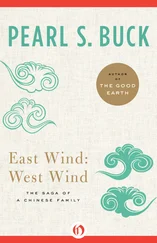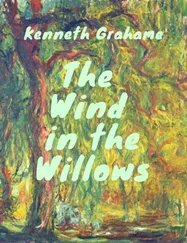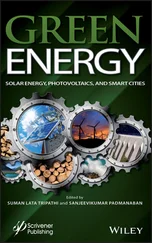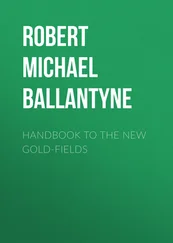Chapter 6: Conceptual design of horizontal axis wind turbinesThe initial sections on choice of machine size, rating, and number of blades have been substantially revised, making use of the NREL cost model. Variable speed operation is considered in greater depth. The section on tower stiffness has been expanded to compare tower excitation at rotational frequency and blade passing frequency.
Chapter 7: Component designNew rules for designing towers against buckling are described and a section on foundation rotational stiffness has been added.
Chapter 8: The controllerIndividual blade pitch control is examined in greater depth.
Chapter 9: Wind turbine installations and wind farmsA survey of recent research on the impact of turbines on birds has been added.
Chapter 10: Electrical systemsNew sections covering (a) Grid Code requirements for the connection of large wind farms to transmission networks and (b) the impact of wind farms on generation systems have been added.
The 10 years since the preparation of the second edition of the Wind Energy Handbook have seen further innovation in many areas of turbine design, and these form the basis for the changes in this new edition. Refinements to blade design, together with improved and better‐understood material properties, have enabled the trend to larger machines to continue. Upwind, three bladed, pitch‐regulated, variable‐speed machines are still firmly established as the norm, despite the scope for the deployment of two bladed downwind machines offshore. However, the one‐time monopoly of high‐speed gearboxes continues to be eroded, thanks to the rise of direct drive turbines and the increased use of medium‐speed gearboxes with permanent magnet generators. The design of fixed offshore support structures continues to evolve, but the most exciting development has been the successful deployment of floating wind turbines.
The third edition retains most of the material of the previous edition, as the fundamental theory underpinning wind turbine design has not changed, but many chapters have been expanded to cover recent developments. In view of the significant effects of wakes on wind farm energy yield and turbine loadings, the opportunity has been taken to add a completely new chapter ( Chapter 9) entitled ‘Wake Effects and Wind Farm Control’. This includes a detailed treatment of engineering models of the wake and their implications for wind farm control, which is emerging as a way to both increase wind farm energy production and reduce turbine fatigue loading by mitigating wake interaction effects. There is also a section on wind farm control and the grid system, recognising the increasing importance of using wind farms to provide ancillary services to the grid.
The main changes to the existing chapters are as follows:
Chapter 1: IntroductionThis chapter has been brought up to date to reflect the continuing increase in the size of wind turbines and wind farms.
Chapter 2: The Wind ResourceUpdated to include edition 4 of the IEC standard. An illustrative example of the Gumbel method for extreme winds has been added. The description of turbulence in wakes and wind farms has been replaced by a more comprehensive treatment in the new Chapter 9.
Chapters 3 and 4: Aerodynamics of Horizontal Axis Wind Turbines, and Further Aerodynamic Topics for Wind Turbines Chapters 3and 4continue the split, as in the second edition, between fundamentals in Chapter 3and more advanced topics in Chapter 4. In Chapter 3, minor changes have been made to Section 3.8dealing with the tip‐loss factor, and additions have been inserted on flat‐back aerofoils and low noise designs in Sections 3.17and 3.19with new sections on ‘add‐on’ devices to control separation, lift, and drag (3.18)and on aerodynamic noise and blade design (3.19). The appendix to chapter 3has been shortened by abbreviating the section on drag. In Chapter 4, Section 4.3, the mathematical analysis of the Kinner circular wing, has been abbreviated, retaining the final results, the Section 4.6on dynamic stall has been extended and a new Section 4.7on applications of computational fluid dynamics to rotor aerodynamics and wakes has been added.
Chapter 5: Design Loads for HAWTsThe changes are mainly minor. The description of IEC load cases has been updated as necessary. A structurally more efficient blade cross‐section has been adopted for the trial blade design, while retaining the existing plan‐form. New figures have been added showing effect of yaw and wind shear on blade root bending moments for a pitch‐regulated turbine.
Chapter 6: Conceptual Design of Horizontal Axis Wind TurbinesNew sections have been added covering high‐speed rotors, low induction rotors, multiple rotor structures, and the effect of the number of blades on C P. Also the initial sections on choice of machine size and rating have been amended to reflect the growth in turbine size. The section on generators has been expanded to include innovative approaches to drive trains and power conversion.
Chapter 7: Component DesignThe section on blade design has undergone major revision and expansion, including a more detailed treatment of the static and fatigue properties of laminates. A simplified example of the fatigue design of a blade with spar caps is presented to illustrate the steps involved. The manufacturing process is described in more detail and new sub‐sections on blade testing, leading edge erosion, and bend‐twist coupling have been added.
Chapter 8: The ControllerNew sections have been added to cover wind speed estimation and LiDAR‐assisted control.
Chapter 9: Wake Effects and Wind Farm Control– see above.
Chapter 10: Onshore Wind Turbine Installations and Wind Farms(previously Chapter 9) This chapter has been revised and updated to take account of important developments in understanding and managing the environmental impact of wind energy developments. Since the second edition, there has been a considerable increase in the literature on environmental impact and in the sophistication of software tools for the effective, sustainable development of wind farms.
Chapter 11: Wind Energy and the Electric Power System(previously Chapter 10) Wind energy is an increasingly important source of electricity generation, and practice for connecting turbines and wind farms to the network and integrating their operation is developing rapidly. The chapter has been revised and updated to address these important developments, including evolving Grid Code requirements and the increasing integration of wind energy into power system operation.
Chapter 12: Offshore Wind Turbines and Wind Farms(previously Chapter 11) The introductory section has been updated to chart recent growth of installed capacity and trends in levelised cost of energy, while the Contract for Difference support mechanism is explained in a new appendix. The section on the offshore wind resource has been extended to include recent research on wake losses, their spatial extent downwind, and the wind farm blockage effect.
Floating offshore wind turbines offer the opportunity to dramatically increase the exploitable resource, and the technology is now moving beyond the prototype stage, with several pilot wind farms already in operation. A new section on floating offshore wind turbine structures has therefore been added, encompassing different configurations, governing design criteria and design methods. Three case studies are also included.
The section on monopile design has been extended to include the new approach to geotechnical design made possible by the PISA research project. The description of different types of fixed support structure has been updated to reflect current developments and a new section added covering fatigue design curves.
Читать дальше












